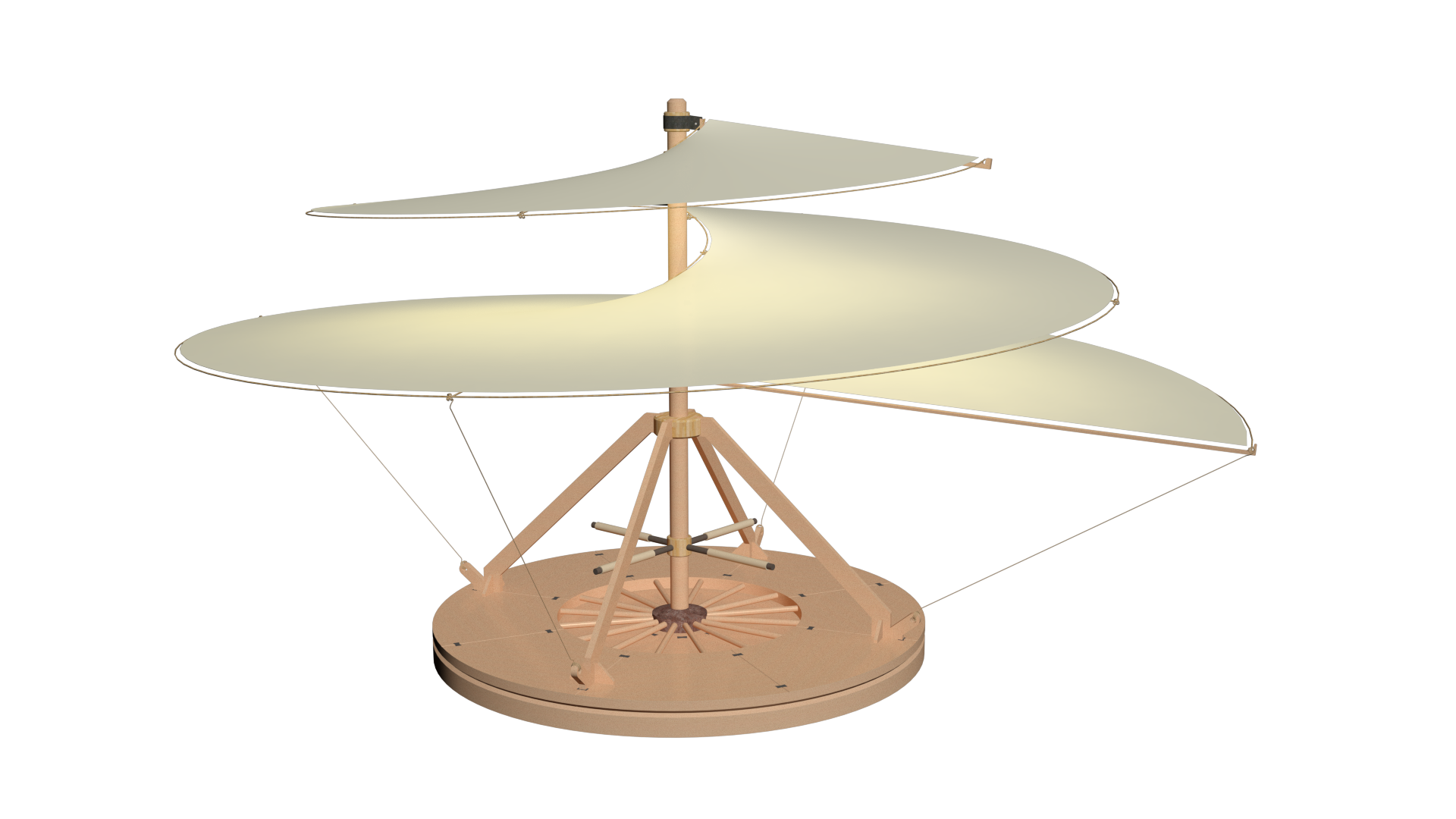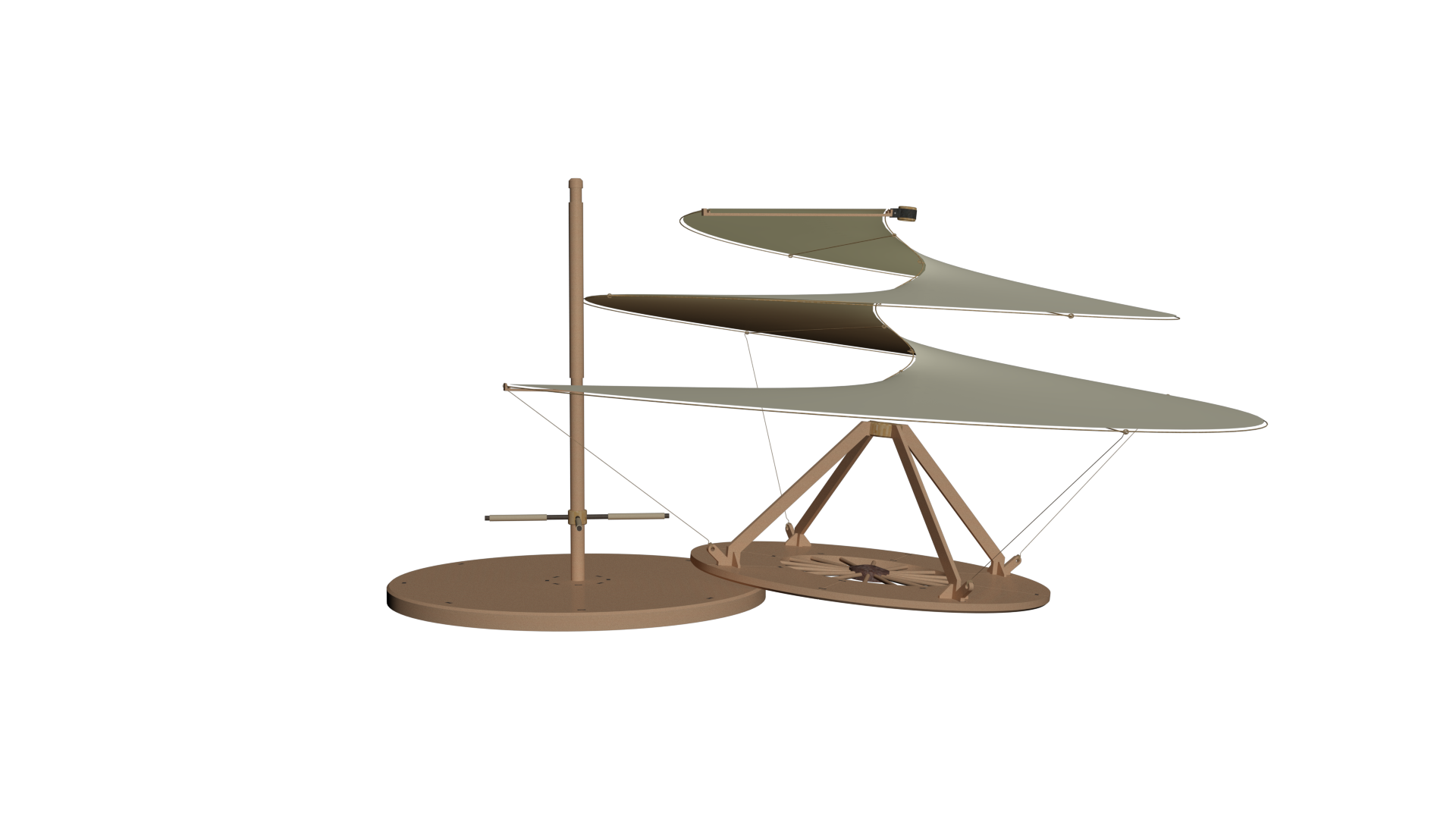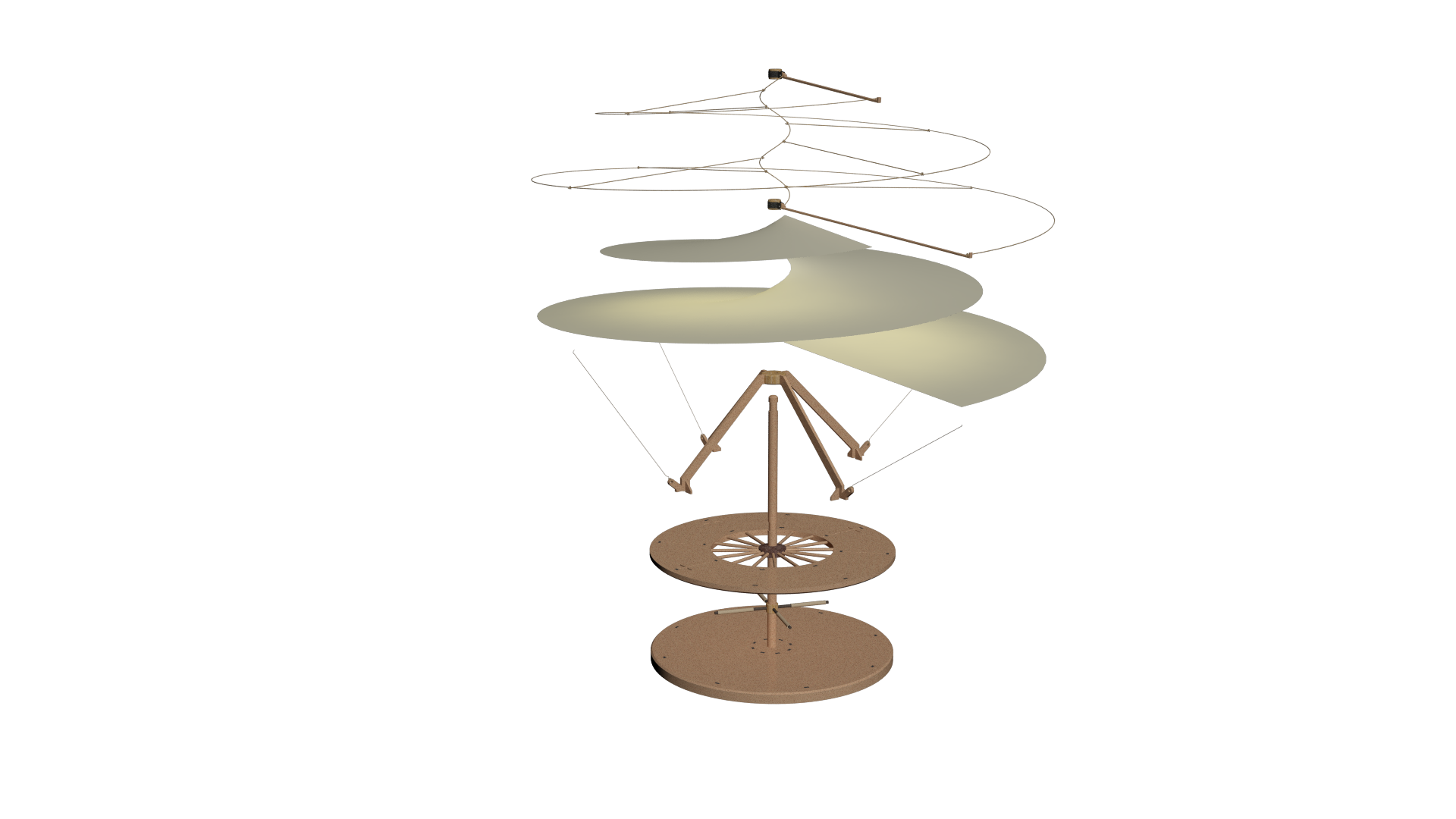
Leonardo Da Vinci's Aerial Screw: From Sketch to 3D Model
Leonardo Da Vinci’s Aerial Screw is one of the most iconic and enigmatic inventions of the Renaissance genius. Inspired by the behavior of air as a dynamic fluid, Da Vinci...
Read MorePublished on Feb 14, 2025 by Mario Roos Hoefgeest Toribio on CAD, 3D Modeling, History, Leonardo Da Vinci

Leonardo Da Vinci’s Aerial Screw is one of the most iconic and enigmatic inventions of the Renaissance genius. Inspired by the behavior of air as a dynamic fluid, Da Vinci envisioned a machine that, by rotating like a screw, could lift off into the sky. Although it was never built or functional, it is considered the precursor to the modern helicopter. In this project, I developed a three-dimensional model and animation that recreate the design and operation of this invention.
During the Italian Renaissance, Leonardo Da Vinci (1452-1519) established himself as the quintessential universal genius, renowned for his contributions to both art and technology. Among his numerous studies, his sketches of flying machines stand out, aiming to emulate bird flight through human muscle power. These ideas laid the groundwork for future aeronautical developments.
One of his most famous designs is the Aerial Screw, a device intended to exploit the properties of air as a fluid, “screwing” itself upward through rotation. This concept was not intended as a fully functional machine but rather as an exploratory exercise to understand the behavior of fluids and the potential for human flight. It is now widely regarded as a precursor to the modern helicopter.

The 3D model was created using Autodesk Inventor, based on references such as the Illustrated Atlas of Leonardo’s Machines by Domenico Laurenza, Mario Taddei, and Edoardo Zanon.

The base consists of a central mast, a rudder with four bars, and a circular platform divided into eight sections. Four people would position themselves on this base and use their feet to propel the screw’s rotation. The mast features two sections with a smaller diameter, enabling the screw’s rotation. The rudder, situated about a meter above the platform, is composed of four padded bars against which the operators would push with their feet to initiate movement.
Above the base is a rotating platform made up of a circular disc, four wooden supports, and a cylinder allowing free rotation around the mast. This platform is divided into eight equal sections and features sixteen bars on which the operators can place their feet for leverage. The wooden supports are anchored to the platform and connected to the central cylinder, enabling smooth rotation around the mast.
The screw comprises two helical guides joined by wooden spokes, forming the structure that gives the invention its name. This screw would be covered with starched linen fabric to reduce porosity. Tensioned ropes would maintain the screw’s shape during rotation.

The spokes connecting the guides were designed as wooden rods tied with cords. The cords and knots were meticulously modeled using small helices and 3D sketches to achieve a realistic appearance.
The 3D model was animated using Autodesk 3ds Max 2017, creating several scenes.

Leonardo Da Vinci’s Aerial Screw is one of the most iconic and enigmatic inventions of the Renaissance genius. Inspired by the behavior of air as a dynamic fluid, Da Vinci...
Read More